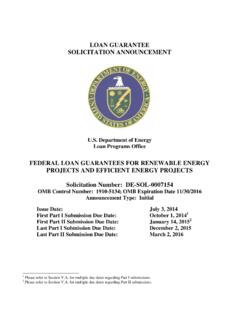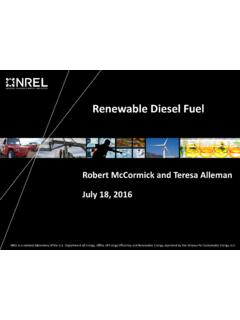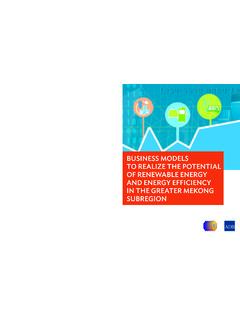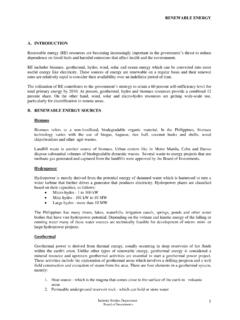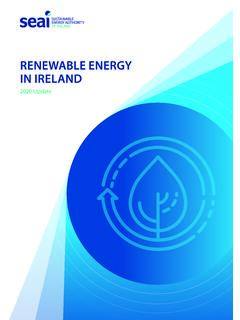Transcription of Planning practice guidance for renewable and low carbon …
1 Planning practice guidance for renewable and low carbon energy July 2013 Department for Communities and Local Government Crown copyright, 2013 Copyright in the typographical arrangement rests with the Crown. You may re-use this information (not including logos) free of charge in any format or medium, under the terms of the Open Government Licence. To view this licence, or write to the Information Policy Team, The National Archives, Kew, London TW9 4DU, or email: This document/publication is also available on our website at If you have any enquiries regarding this document/publication, email or write to us at: Department for Communities and Local Government Eland House Bressenden Place London SW1E 5DU Telephone: 030 3444 0000 For all our latest news and updates follow us on Twitter: Month 2013 ISBN: 978-1-4098-3983-5 2 Planning practice guidance for renewable and low carbon energy Introduction 1.
2 This guidance provides advice on the Planning issues associated with the development of renewable energy . It will be kept under review and should be read alongside other Planning practice guidance and the National Planning Policy Framework. This guidance is being published in advance of the Department for Communities and Local Government s beta Planning practice guidance web-based resource, and will be integrated into this web-based resource later in the year. 2. Government Planning practice guidance can be a material consideration in Planning decisions and should generally be followed unless there are clear reasons not to. Planning for renewable energy : A Companion Guide to PPS22 is cancelled. Why is Planning for renewable and low carbon energy important? 3. Increasing the amount of energy from renewable and low carbon technologies will help to make sure the UK has a secure energy supply, reduce greenhouse gas emissions to slow down climate change and stimulate investment in new jobs and businesses.
3 Planning has an important role in the delivery of new renewable and low carbon energy infrastructure in locations where the local environmental impact is acceptable. Are all energy developments handled by the local Planning authority? 4. Local Planning authorities are responsible for renewable and low carbon energy development of 50 megawatts or less installed capacity (under the Town and Country Planning Act 1990). renewable and low carbon development over 50 megawatts capacity will be considered by the Secretary of State for Energy1, under the Planning Act 2008, and the local Planning authority will be a statutory consultee. Microgeneration is often permitted development and may not require an application for Planning permission2. 1 2 How can local Planning authorities develop a positive strategy to promote the delivery of renewable and low carbon energy ?
4 5. The National Planning Policy Framework explains that all communities have a responsibility to help increase the use and supply of green energy , but this does not mean that the need for renewable energy automatically overrides environmental protections and the Planning concerns of local communities. As with other types of development, it is important that the Planning concerns of local communities are properly heard in matters that directly affect them. 6. Local and neighbourhood plans are the key to delivering development that has the backing of local communities. When drawing up a Local Plan local Planning authorities should first consider what the local potential is for renewable and low carbon energy generation. In considering that potential, the matters local Planning authorities should think about include: the range of technologies that could be accommodated and the policies needed to encourage their development in the right places the costs of many renewable energy technologies are falling, potentially increasing their attractiveness and the number of proposals different technologies have different impacts and the impacts can vary by place the UK has legal commitments to cut greenhouse gases and meet increased energy demand from renewable sources.
5 Whilst local authorities should design their policies to maximise renewable and low carbon energy development, there is no quota which the Local Plan has to deliver 7. There is information in the rest of the guidance on how to identify suitable areas, criteria-based policies and buffer zones/separation distances. How can local Planning authorities identify suitable areas for renewable and low carbon energy ? 8. There are no hard and fast rules about how suitable areas for renewable energy should be identified, but in considering locations, local Planning authorities will need to ensure they take into account the requirements of the technology (see paragraphs 12-13) and, critically, the potential impacts on the local environment, including from cumulative impacts (see paragraphs 43-44). The views of local communities likely to be affected should be listened to.
6 9. There is a methodology available from the Department of energy and Climate Change s website on assessing the capacity for renewable energy development which can be used and there may be existing local assessments. However, the impact of some types of technologies may have changed since assessments were drawn up ( the size of wind turbines has been increasing). In considering impacts, assessments can use tools to identify where impacts are likely to be acceptable. For 4example, landscape character areas could form the basis for considering which technologies at which scale may be appropriate in different types of location. Landscape Character Assessment is a process used to explain the type and characteristics of landscape in an area. Natural England has used Landscape Character Assessment to identify 159 National Character Areas in England which provide a national level database.
7 Landscape Character Assessment carried out at a county or district level may provide a more appropriate scale for assessing the likely landscape and visual impacts of individual proposals. Some renewable energy schemes may have visual impacts on the marine and coastal environment and it may be appropriate to also to assess potential impacts on seascape character. 10. Identifying areas suitable for renewable energy in plans gives greater certainty as to where such development will be permitted. For example, where councils have identified suitable areas for onshore wind or large scale solar farms, they should not have to give permission outside those areas for speculative applications involving the same type of development when they judge the impact to be unacceptable. 11. When identifying suitable areas it is also important to be clear on the factors that will be taken into account when considering individual proposals in these areas.
8 These factors may be dependent on the investigatory work underpinning the identified area. The expectation should always be that an application should only be approved if the impact is (or can be made) acceptable3. What technical considerations relating to renewable energy technologies affect their siting? 12. Examples of the considerations for particular renewable energy technologies that can affect their siting include proximity of grid connection infrastructure and site size, and: for biomass, appropriate transport links for hydro-electric power, sources of water, for wind turbines, predicted wind resource, considerations relating to air safeguarding, electromagnetic interference and access for large vehicles 13. Discussions with industry experts can help to identify the siting requirements and likely impacts of technologies.
9 The National Policy Statements4 on the Department of energy and Climate Change s website give generic and technology specific advice relevant to siting particular technologies. The Environment Agency has published advice showing which areas may be suitable for open loop ground source heat pumps5, as well as advice on the technologies it regulates. 3 See National Planning Policy Framework paragraph 98: 4 5 5Do criteria based policies have a role in Planning for renewable energy ? 14. Policies based on clear criteria can be useful when they are expressed positively ( that proposals will be accepted where the impact is or can be made acceptable). In thinking about criteria the National Policy Statements6 published by the Department of energy and Climate Change provide a useful starting point.
10 These set out the impacts particular technologies can give rise to and how these should be addressed. 15. In shaping local criteria for inclusion in Local Plans and considering Planning applications in the meantime, it is important to be clear that: the need for renewable or low carbon energy does not automatically override environmental protections cumulative impacts require particular attention, especially the increasing impact that wind turbines and large scale solar farms can have on landscape and local amenity as the number of turbines and solar arrays in an area increases local topography is an important factor in assessing whether wind turbines and large scale solar farms could have a damaging effect on landscape and recognise that the impact can be as great in predominately flat landscapes as in hilly or mountainous areas great care should be taken to ensure heritage assets are conserved in a manner appropriate to their significance.












